In the 2019 Global Terrorism Index report published by the Institute for Economics and Peace, Philippines moved up a rank at ninth (9th) position among top 10 countries impacted by the act of terrorism. However, the data depicts a decline of 13 per cent of the total incidents related to terrorism.1 As an archipelago nation consisting of 7,107 Islands and a population of approximately 108 million (as of 2019)2, Philippines is categorically divided into three significant Islands— Luzon, Visayas, and Mindanao.3 Being a Spanish colony from 16th century (1542) till its independence from Spanish rule in 19th century (1898) and subsequent rule of the United States (US) on the Philippines until its independence in July 1946, the Christian-dominated population of Filipinos considered Muslims minority as socially backward and untrustworthy.4
From the time of its independence from the US, the Philippines has witnessed several incidents, including dictatorship, coup attempts against the government, and acts of terrorism and separatist movements by the ethnic minority of Muslims have prevented the island nation from enjoying political stability and economic development. According to ‘2015 Philippine Statistical Yearbook’ compiled by the Philippine State Authority, approximately 6 per cent of total Filipinos are Muslims, and most of them are inhabitants of the Southern Philippines.5 The wave of Islamic separatist movements emerged in the Southern Philippines, which was led by Islamic radical groups to seize the government. During the efforts of dealing with the highest number of cases of COVID-19 (total cases in Philippines—205,581 as of 27 August 20206) among the Southeast Asian countries, double suicide bombings in Southern Philippines have marked as the deadliest terrorist attack of the year 2020. This article highlights the developments related to recent double bombings in the town of Jolo in Sulu province, the “come-back” made by Islamic State (IS) terrorist organisation post-battle of Marawi through Abu Sayyaf Group as IS-EAP (Islamic State-East Asia Province), the nexus and later friction between Abu Sayyaf Group & Al-Qaeda, and further implications of the attack.
The ‘Double’ Bombings
The attack refreshes the memory of January 2019 twin suicide bombings inside the premises of Our Lady of Mount Carmel Cathedral in the town of Jolo. The bombings were claimed by Islamic State in which 20 people were killed and 111 were injured. 7 In similar modus operandi, on 24 August 2020, at least 14 individuals, including Army personnel and civilians were killed and 75 were injured in a twin suicide bombing that took place in the busiest market and nearby of the Cathedral of Our Lady of Mt. Carmel in the town of Jolo in Sulu province of the Southern Philippine. Two female suicide bombers—widows of the slain members of Abu Sayyaf Group8, had carried out twin bombings to avenge the death of AGS’s leader—Hatib Hajan Sawadjaan who was injured on 06 July and later succumbed to injuries from gun-battle in a jungle area near Patikul town in Sulu province. “They [ASG] wanted to avenge the death of Sawadjaan through this terrorist attack as they are down in strength but wanted to prove their existence”, said Philippines’ Army commanding General Cirilito Sobejana.9A day after the bombings, Islamic State-East Asia Province (IS-EAP) issued a statement and claimed the responsibility of the attack; celebrating the Jolo bombings.10
On 26 August, the Philippine Army confirmed the speculations that both female suicide bombers were widows of slain ASG terrorists. The first female bomber—Nanah was the wife of “first confirmed” Filipino suicide bomber—Norman Lasuca who carried out a terrorist operation in June 2019 in Sulu province. The second female bomber—Inda Nay was the widow of Abu Talha who was killed in a counter-terrorism operation in November 2019.11If we look at the history, female suicide bombers have been part of the suicide squad of terrorist organisations, including Hamas, Boko Haram, LTTE (Liberation Tigers of Tamil Eelam), al-Qaeda/al-Qaeda in Iraq (AQI), and Islamic State (IS). The frequent involvement of women as suicide bombers in terrorist operations of Islamic State/affiliated groups is a crucial point to analyse. In 2014, IS established only-female division—Al-Khansaa Brigade, which was responsible for carrying out searches at checkpoints or surprise raids on suspicious activities involving women in IS-controlled territories. However, it cannot be ruled out that stringent counter-terrorism measures and loss of physical territories may have motivated the Islamic State to extend the responsibilities of suicide bombings on females, along with male operatives or as lone-wolves.
The Perpetrator—Abu Sayyaf Group
Abu Sayyaf Group (ASG) is the Philippines’ indigenous terrorist group which supports the ideology of a separate Islamic State for the Muslim population.12 The word “Abu Sayyaf” literally means “Bearer of the Sword” in the Arabic language. After its formation in 1991, the Abu Sayyaf Group paid allegiance and aligned with a transnational terrorist organisation—al-Qaeda. However, there is no evidence in the form of statements or any records of Abu Sayyaf Group paying allegiance to al-Qaeda. Due to close relations between slain leaders of al-Qaeda’s Osama Bin Laden and ASG’s Abdurajak Abubakar Janjalani, ASG received enormous financial support from al-Qaeda to operate in the Mindanao. As a poster group for Islamic movement, ASG gained sympathies in the form of financial and logistical support from Iran, Pakistan, Afghanistan, Egypt, Libya, and Algeria.13 On 04 April 1991, ASG carried-out its first terrorist attack and killed two US national evangelists in Zamboanga city in the Philippines.14 In the early 2000s, ASG emerged as a notorious terrorist group based in the Philippines after the beheading of Guillermo Sobero—one of the three Americans kidnapped in mid-June 2001. The beheading was a “gift” to commemorate the 103rd anniversary of Philippine independence from Spain.15
Split Between al-Qaeda and Abu Sayyaf Group
The friction in the relationship between al-Qaeda and Abu Sayyaf Group began to surface after the arrest of al-Qaeda’s known terrorist—Ramzi Yousef in Islamabad, Pakistan during a raid by Pakistani authorities in February 1995.16 According to the 9/11 Commission Report, Ramzi Yousef revealed the collaboration between operatives of al-Qaeda and ASG in plotting a “multi-phased” Bojinka terrorist attack in Manila.17 The foiled Bojinka plot included the assassination of Pope John Paul II and former US President Bill Clinton during their separate visits to Manila, the US Consulate in Karachi (Pakistan), nuclear power plants in the United Kingdom (UK), France and the US, US cargo planes, and the CIA (Central Intelligence Agency) Headquarters in Virginia, US.18 The revelation of the foiled terrorist attack cast a shadow on the ties between al-Qaeda and ASG.
After the killing of ASG leader Abudarajak Janjalani in a counter-terrorism operation in 1998, the organisation structure of the group has deteriorated. Furthermore, the US-led “War on Terror” campaign post-9/11 attacks deployed around 1600 security forces personnel, including 150 US Special Forces operators, to support the Armed Forces of Philippines’ counter-terrorism operations in Southern Philippines for eradicating ASG as the primary objective.19 As a part of significant success against ASG, in 2006, the US forces along with 10 Battalions of Armed forces of Philippines had killed approximately 500 ASG terrorists, including its appointed leader Khadaffy Janjalani in an operation code-named “Oplan Ultimatum”.20
Abu Sayyaf Group as Islamic State-East Asia Province
After the Islamic State’s Caliphate call in 2014, many terrorist groups around the world pledged allegiance to IS. Likewise, several terrorist groups, along with ASG, owed allegiance to IS and established Ahulus Shura or a “Council of Representatives” with the appointment of Isnilon Totoni Hapilon ( former slain leader of Abu Sayyaf Group) as the overall leader of the branch of IS in the Philippines. 21 With the recruitment of locals from the Mindanao Island, the transnational terrorist organisation—Islamic State (IS) or Daesh has been eyeing for the possibility of its expansion and establishment of its so-called Caliphate in the Philippines. The town of Jolo—which is also the capital of Sulu province, continues to be the stronghold of Abu Sayyaf Group (ASG) which officially declared itself as Islamic State-East Asia Province (IS-EAP) after declaring allegiance to IS in 2014.
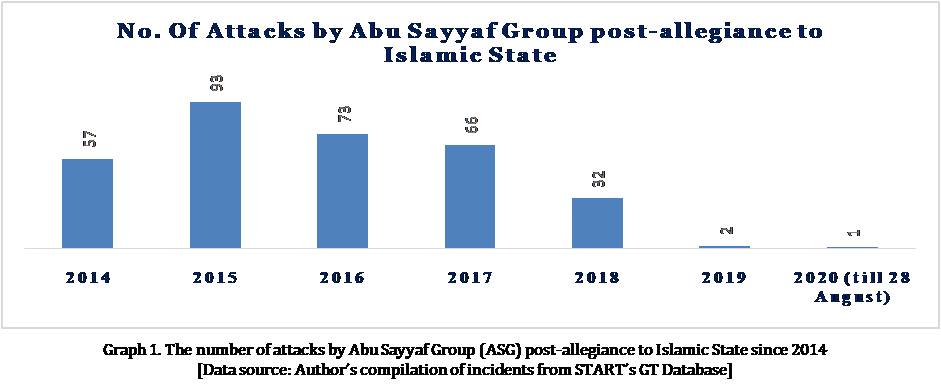
Through allegiance to Islamic State, ASG not only gained the financial support and limelight but also speeded-up its terrorist operations in Southeast Asian countries. According to the data compiled from University of Maryland’s project START Global Terrorism Database (as shown in Graph 1), since its allegiance to Islamic State, Abu Sayyaf Group carried out around 324 terrorist attacks in six years (till 28 August 2020), with an average of 54 terrorist attacks a year. From 2014 to 2016, ASG carried out 223 terrorist attacks which are around 69 per cent of the total attacks. However, post-2016, there has been a continuous and significant decline in ASG’s terrorist activities, including only two terrorist attacks in 2019 (as shown in Graph 1). The decline in terrorist activities could have been due to several factors, including setback of Islamic State’s defeat in controlled territories, stringent counter-terrorism operations in the Philippines, and a large number of slain terrorists in the 2017 battle of Marawi reducing the strength of the group.
In May 2017, the Marawi region in Mindanao Island witnessed the battle between the IS terrorists and the Philippines security forces, where IS tried to take-over and establish the so-called Caliphate in the region. The battle was concluded with the victory of the government of the Philippines and allied forces (the United States, Australia, China, Russia, and Israel), but the five-month-long battle (from May to October 2017) highlighted the firm footprints of IS with the support from ASG and other local jihadist groups—Maute (aka IS of Lanao). Around 900 terrorists were killed, including IS-EAP’s Emir—Isnilon Hapilon.22 The defeat in the battle of Marawi was a significant setback for the IS-EAP (Islamic State-East Asia Province) or Abu Sayyaf Group as Islamic State has been investing into the local jihadist groups to use Southern Philippines as a hub of its activities and a transit point for foreign (terrorist) fighters [FTFs] from outside Southeast Asia. According to the 22nd report submitted by the United Nations Analytical Support and Sanctions Monitoring Group concerning the Resolution 2368 (2017), despite heavy losses suffered in 2017 battle of Marawi, Abu Sayyaf Group continues to receive monetary assistance from Islamic State’s central command; the group has also been involved in organised crime activities such as looting bank and extortion.23
Winning the Game is not Easy!
The Philippines President—Rodrigo Duterte’s approach for combat narcotics, organised crimes, and terrorism, appears to be stringent through his policies. On 03 July 2020, President Duterte signed “Anti-Terrorism Bill” and called it a comprehensive approach to contain terrorist threat over the Philippines. However, the same law has been labelled as controversial by the Human Rights group as the implementation of the Ant-Terrorism law will cease the “freedom of expression” and could jail suspects without any charges for weeks.24 The recent developments in the investigation of the double suicide bombings have indicated that one of the female suicide bombers [Nanah] was an Indonesian national, married to slain Filipino ASG suicide bomber—Norman Lasuca who was killed in a suicide attack in 2019. However, the Indonesian Embassy in Manila and Consulate General in Davao, Philippine are still monitoring the aftermath of the attack. “It will take a while to determine the identities of the perpetrators [of the attack]”, said Teuku Faizasyah—Spokesman of Indonesia’s Ministry of Foreign Affairs.25
An Army’s Chief of the Western Mindanao Command (Westmincom)—Maj. Gen. Corleto Vinluan Jr. has stated the mastermind of this attack and bombmaker of Abu Sayyaf Group—Mundi Sawadjaan, and these two [female] suicide bombers had managed to slip away after killing four Army officers from the 9th Intelligence Service Unit of the Army’s 11th Infantry Division in Jolo on 29 June this year. Had Army captured Sawadjaan and suspected suicide bombers that day; the bombings would have been contained.26
The shadows of “black flag” of Islamic State have not disappeared anywhere and may stay there as long the economic, political and ethno-religious differences between the Christian-dominated North and Muslim-dominated South Philippines are not resolved. The Filipino diaspora in the Gulf nations is highly vulnerable to radicalisation & extremism and may further become a challenge for Philippines security agencies to prevent them from joining the Islamist terrorist groups. After incurring heavy losses of controlled territories in the Middle-East region, Islamic State has been desperate to establish its physical and virtual presence in Africa, South Asia and Southeast Asia regions. The unstable political and economic conditions of the Philippines and likely Islamic radical ideology of the indigenous groups such as Abu Sayyaf Group (ASG) has enabled Islamic State to sweep into the region quickly and threaten the national security and sovereignty of the Philippines.
Endnotes
- “Global Terrorism Index 2019: Measuring the Impact of Terrorism”, The Institute for Economics & Peace, Available from: http://visionofhumanity.org/app/uploads/2019/11/GTI-2019web.pdf
- “Philippines”. World Population Dashboard- United Nations Population Fund, Available from: https://www.unfpa.org/data/world-population/PH
- Philippines: Labor Laws and Regulations Handbook- Strategic Information and Basic Laws, Vol. 1, “Country Overview”, p. 8.
- Interview of Professor Thomas McKeena. “Muslim Separatists in the Southern Philippines”, Asia Society, Available from: https://asiasociety.org/muslim-separatists-southern-philippines
- Philippines. “2015 Philippine Statistical Yearbook”, Philippine Statistics Authority, 2015, Available from: https://psa.gov.ph/sites/default/files/2015%20PSY%20PDF.pdf#56
- “Philippines-Bing COVID-19 tracker”, Available from: https://bing.com/covid/local/philippines
- Gomez, Jim. “20 dead as bombs target Sunday Mass in Philippine cathedral”, Associated Press, 27 January 2019, Available from: https://apnews.com/baebd7e7e26843d6b771d7fb90d439ea
- Sajid, Islamuddin. “Philippine identifies 2 suicide bombers in Sulu attacks”, Anadolu Agency, 26 August 2020, Available from: https://www.aa.com.tr/en/asia-pacific/philippine-identifies-2-suicide-bombers-in-sulu-attacks/1953607#
- Gomez, Jim. “Army chief: Militant leader likely killed in Philippines”, Associated Press News, 25 August 2020, Available from: https://apnews.com/d4595e2a569618d3f7abb3dd10aa30f7
- Maitem, Jeoffrey. “IS militants claim responsibility for Sulu blasts”, Inquirer, 25 August 2020, Available from: https://newsinfo.inquirer.net/1326794/is-militants-claim-responsibility-for-sulu-blasts ; “IS supporters celebrate deadly Jolo, Sulu bombings”, SITE Intelligence Group, 24 August 2020, Available from: https://ent.siteintelgroup.com/Jihadist-Threat-Southeast-Asia/is-supporters-celebrate-deadly-jolo-sulu-bombings.html
- Sajid, Islamuddin. Please refer note 8.
- “Abu Sayyaf Group (Philippines, Islamist separatists)”, Council on Foreign Relations, 27 May 2009, Available from: https://www.cfr.org/backgrounder/abu-sayyaf-group-philippines-islamist-separatists
- Hutchison, G. (Lieutenant Colonel) Billye. “Abu Sayyaf”, US Air Force Counterproliferation Centre-Air University, Future War Series No. 49, September 2009, Available from: https://media.defense.gov/2019/Apr/11/2002115513/-1/-1/0/49ABUSAYYAF.PDF
- “Abu Sayyaf kidnappings, bombings and other attacks”, GMA News Online, 23 August 2007, Available from: https://www.gmanetwork.com/news/news/content/154797/abu-sayyaf-kidnappings-bombings-and-other-attacks/story/
- “Troops scour area for man rebels say they beheaded”, USA Today, 20 June 2001, Available from: http://usatoday30.usatoday.com/news/world/june01/2001-06-11-hostages.htm
- Johnston, David. “Fugitive in Trade Center blast is caught and returned to US”, The New York Times, 09 February 1995, Available from: https://www.nytimes.com/1995/02/09/nyregion/fugitive-in-trade-center-blast-is-caught-and-returned-to-us.html
- U.S. National Commission on Terrorist Attacks upon the United States, 9/11 Commission Report: The Official Report of the 9/11 Commission and Related Publications, by Thomas H. Kean and Lee Hamilton, Washington DC: 2004, Available from: https://www.9-11commission.gov/report/911Report.pdf
- “Project Bojinka”, Global Security, Available from: https://www.globalsecurity.org/security/profiles/project_bojinka.htm
- “Operation Freedom Eagle- Balikatan 2002-1”, Global Security, Available from: https://www.globalsecurity.org/military/ops/balikatan_02-1.htm
- Kate McGeown. “Is this the end for Abu Sayyaf?”, BBC News, 23 January 2017, Available from: http://news.bbc.co.uk/2/hi/asia-pacific/6290805.stm
- Rohan Gunaratna. “Islamic State to create Southeast Asian Satellite”, Benar News, 12 January 2016, Available from: https://www.benarnews.org/english/commentaries/asia-pacific-threat-update/southeast-satellite-01122016135306.html
- Beech, Hannah and Jason Gutierrez. “How ISIS is rising in the Philippines as it dwindles in the Middle-East”, The New York Times, 09 March 2019, Available from: https://www.nytimes.com/2019/03/09/world/asia/isis-philippines-jolo.html
- United Nations Analytical Support and Sanctions Monitoring Group. “Twenty-second report of the Analytical Support and Sanctions Monitoring Team submitted pursuant to resolution 2368 (2017) concerning ISIL (Da’esh), Al-Qaida and associated individuals and entities”, United Nations Security Council (S/2018/705), Available from: https://www.un.org/en/ga/search/view_doc.asp?symbol=S/2018/705&referer=/english/&Lang=E
- McCarthy, Julie. “Why Rights Groups worry about the Philippines’ New Anti-Terroism Law”, NPR, 21 July 2020, Available from: https://www.npr.org/2020/07/21/893019057/why-rights-groups-worry-about-the-philippines-new-anti-terrorism-law
- Wirajuda, Tunggul and MelecioLuib. “Indonesian Foreign Minister: No Indonesians Involved in Jolo, Sulu Bombings”, Kompas Online, 27 August 2020, Available from: https://go.kompas.com/read/2020/08/27/230634974/indonesian-foreign-minister-no-indonesians-involved-in-jolo-sulu-bombings
- Andrade, I Jeannette and Julie S. Alipala. “Abu Sayaaf leader hunted for 2 blasts rock Jolo”, Inquirer, 25 August 2020, Available from: https://newsinfo.inquirer.net/1326572/2-blasts-rock-jolo-abu-leader-hunted
(The paper is the author’s individual scholastic articulation. The author certifies that the article/paper is original in content, unpublished and it has not been submitted for publication/web upload elsewhere, and that the facts and figures quoted are duly referenced, as needed, and are believed to be correct). (The paper does not necessarily represent the organisational stance... More >>
Image Source: https://www.straitstimes.com/sites/default/files/styles/article_pictrure_780x520_/public/articles/2020/08/25/af_jolo-bombings_250820.jpg?itok=7HUpCofL×tamp=1598333453

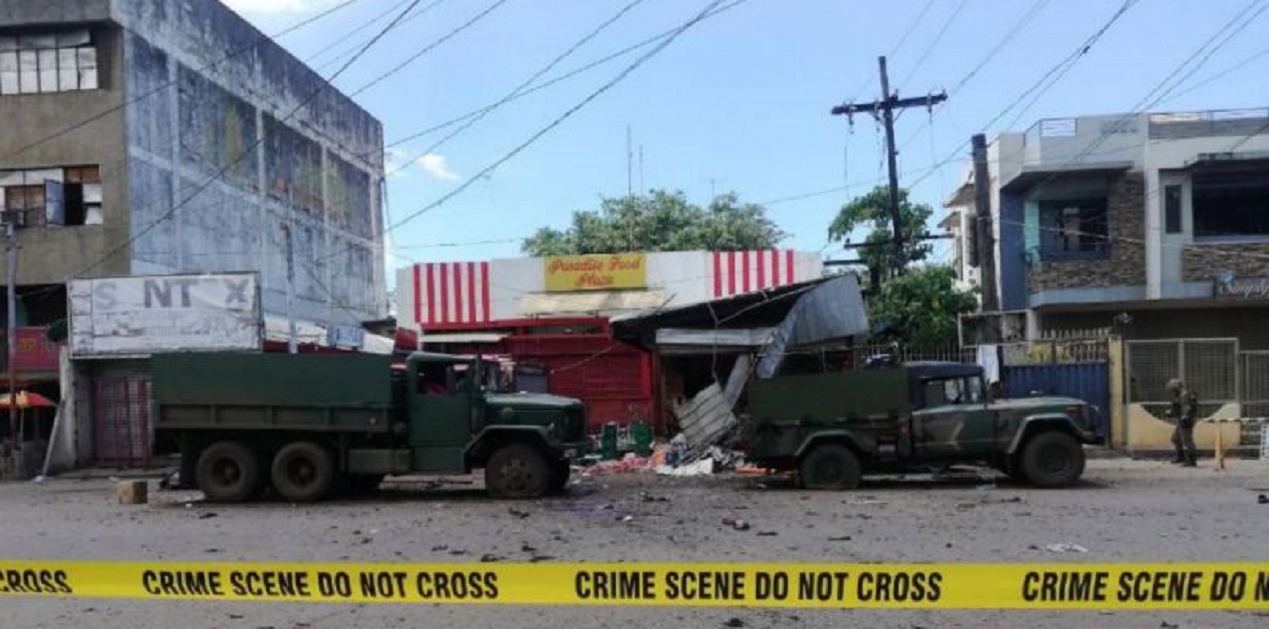



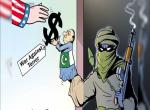



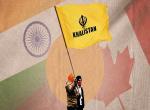
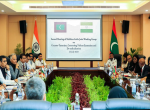
Post new comment